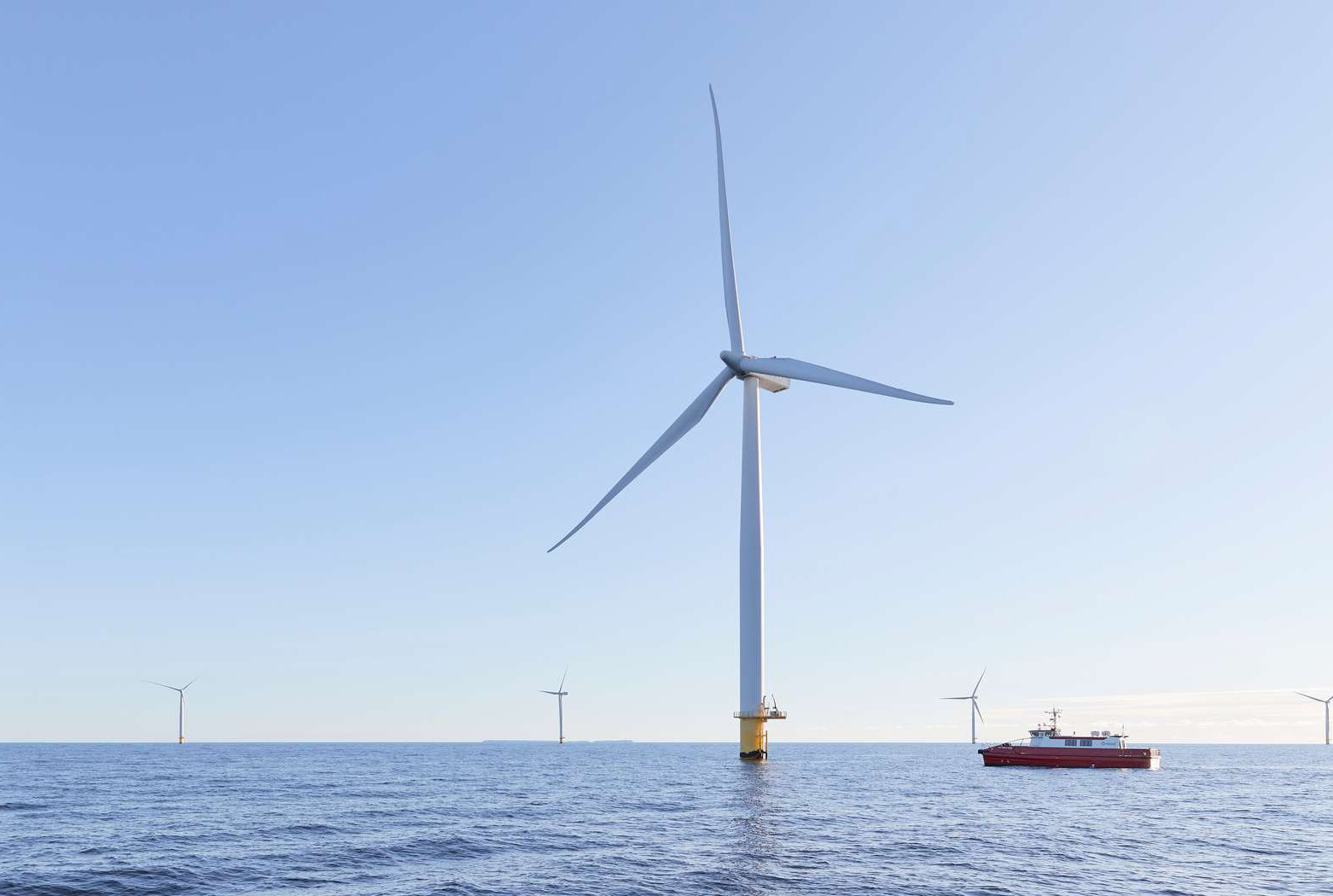
The Day, January 31, 2024
On the same day that yet another large ship departed Adm. Harold E. Shear State Pier bound for the South Fork Wind project off Long Island, the state on Wednesday announced the launch of the Connecticut Wind Collaborative intended to keep the state at the forefront of this new industry.
The collaborative, first announced last October, will be a nonprofit tasked with working with the government, industry, labor and academia, along with neighboring states, to help drive offshore wind toward becoming a major economic driver in the state. It will be housed in offices at the Southeastern Connecticut Enterprise Region in Groton, an agency that serves as the area’s Economic Development District.
In a statement, Gov. Ned Lamont said the Connecticut Wind Collaborative would help guide the development of offshore wind statewide.
“Right now, throughout the United States, the offshore wind industry is seeking locations to grow and expand, and Connecticut has the opportunity to add hundreds of new good-paying jobs in this sector,” Lamont said. “We must work to ensure that Connecticut builds an offshore wind ecosystem that boosts local economies and spurs investment while also providing consumers with a source of clean, reliable, and affordable power.”
The collaborative is one leg in Connecticut’s Offshore Wind Strategic Roadmap, which will work to create a regional supply chain and develop the workforce required to meet the needs for the wind industry. The idea is to create a wind industry cluster in New England that will create a “critical mass of expertise” to boost domestic wind power.
The state announced Wednesday that Paul Lavoie, the state’s chief manufacturing officer, was voted in as chairman and treasurer of the collaborative earlier this month. Other board officials named at the time were Andrew Lavigne, manager of the state’s Clean Economy Program at the Department of Economic and Community Development; Kate Aufhauser, the governor’s strategic adviser for economic development, and Paul Whitescarver, executive director of seCTer.
Lavigne and Aufhauser will serve as co-vice chairs, while Whitescarver, former commander of the Naval Submarine Base in Groton, will act as secretary. The only other board member named so far is William Cox, vice president of business development and investment at Rhode Island Commerce, but the board will be recruiting 10 more members from a variety of sectors.
The board also will be seeking out a full-time executive director who can start as early as April. Organizational branding and website development services will be solicited from an outside marketing firm.
Initial funding of $577,500 for the wind collaborative came from the joint offshore wind venture first announced by Ørsted and Eversource as part of their commitment to the Revolution Wind project.
“The wind collaborative is going to be the catalyst for growth in offshore wind by putting Connecticut at the epicenter of a regional coordinated effort,” said board member Lavoie in a release. “This is a once-in-a-generation opportunity to stand up a new industry in Connecticut and the region, and the wind collaborative will be at the forefront of that effort.”
Of course, offshore wind has had its ups and downs in Connecticut and elsewhere. Last year, the Danish company Ørsted, pointing to higher costs, rising interest rates and supply chain problems, canceled two offshore wind projects in New Jersey, but the state last week awarded two new contracts to different companies. By one count, about a quarter of all offshore wind farm contracts last year were canceled nationwide, mostly due to rising costs.
In Connecticut, Avangrid canceled the Park City Wind project in October, citing economic factors. It was to be the state’s largest wind project to date.
Eversource has sold its interest in the New York project Sunrise Wind to Ørsted and also has sold off several offshore wind leases as it attempts to back away from its previous financial commitment to the industry.
Still, there have been victories as well, including the South Fork Wind project launched from New London that started delivering power to the New York grid in December. Ulysses Hammond, executive director of the Connecticut Port Authority, reported that the 11th of 12 South Fork Wind turbines was to leave the Port of New London on Wednesday evening.
Improvements to the State Pier terminal have cost $310 million, more than three times the original estimate. Eversource and Ørsted combined have committed to investing $100 million in the project while state taxpayers are funding the remaining $210 million.
The next offshore wind project Revolution Wind, a joint venture of Ørsted and Eversource, is expected to get under way this spring. If all goes according to plan, the 65-turbine project will power more than 350,000 homes in Connecticut and Rhode Island starting next year.
An even more ambitious 80-turbine Sunrise Wind project will be next up, serving nearly 600,000 residential customers in New York.
